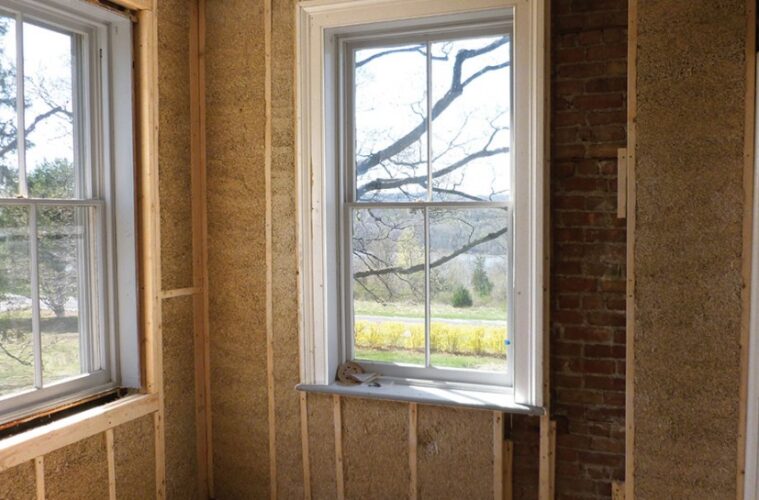American homeowners will soon have the option to replace environmentally degrading insulation with hempcrete, thanks to a new amendment to international building codes, Hemp Building Mag reports.
Hempcrete is made by blending natural hemp fibers with lime, and it’s a carbon-sequestering material that can provide a fire-resistant, mold-proof alternative to traditional plastic-based insulation. In Europe, contractors have been building houses with hempcrete for nearly 30 years. The United States is decades behind this movement, thanks to cannabis prohibition laws. Because hemp was outlawed in the US until 2018, hempcrete insulation has been prevented from appearing in American homes until recently.
“Hempcrete, a mixture of hemp hurds or ‘shiv’ (made from hemp stalks) and a lime binder, creates a long-lasting fibrous insulation for wall assemblies that is reusable, vapor permeable, stores carbon, resists fire, resists mold and resists pests,” the US Hemp Building Association (USHBA) explained in a press release. “Because hemp sequesters carbon in the walls of a building, hempcrete is an excellent building material that can offset the construction industry’s carbon footprint.”
As previously stated, the US finally legalized hemp in 2018. We have since seen the emergence of hemp-derived building materials, weed packaging, bioplastics, and an industry at large. In 2021, the USHBA submitted an application to the International Code Council (ICC) requesting that US building codes be amended to allow the use of hempcrete. The association raised over $50,000 and assembled a committee of civil engineers, hemp builders, architects, and code experts to advocate for their cause. So this has been a long time in the making.
Earlier this month, the ICC agreed to update its International Residential Code (IRC) to authorize the use of hempcrete as an approved “wall infill.” The IRC establishes building guidelines for up to two-family residential homes and townhouses in every US state, with the exception of Wisconsin. (Oh, come on Wisco!) These new building codes won’t officially take effect until 2024, but contractors can apply with local building departments to begin using hemp insulation before that date.
“As an architect, including hemp lime into the building code is of paramount importance,” Ana Konopitskaya of CoExistBuild, who co-wrote the application to the ICC, told Hemp Build Mag. “It will allow architects like myself, focused on sustainability, to specify this product in any municipality across the US.”
Although the rules won’t go into effect for at least two more years, several builders are getting a head start on building hemp homes. In 2021, a Canadian hemp company bought 1,000 acres of land in Colorado to develop eco-friendly affordable housing primarily made out of hempcrete. The US Environmental Protection Agency (EPA) and other federal agencies continue to issue grants to companies that are working to create sustainable building materials from naturally-grown hemp.
Matt Marino, a North Dakota-based Homeland Hempcrete builder, told HempBuildMag that although many US companies were moving ahead with hemp construction projects, the IRC approval “helped add legitimacy to our craft… It is a tool for us to standardize our deliverables. This is just the beginning, and I look forward to seeing where we can take this industry.”


